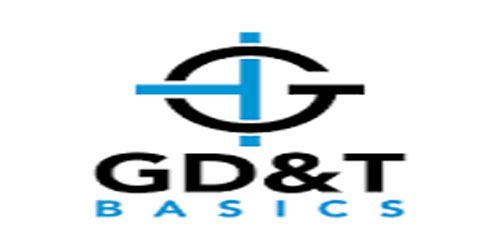What Is GD & T | GD&T: The Basics of Geometric Dimensioning and Tolerancing Details
Geometric Dimensioning and Tolerancing (GD&T) is a system of symbols, rules, and practices used in engineering and manufacturing to communicate design specifications and tolerances for mechanical components. GD&T provides a precise and standardized language for defining the form, orientation, location, and tolerance of features on a part. In this article, we will delve into the details of GD&T, its symbols, and its application in the mechanical department.
Introduction to GD&T:
GD&T is based on the principles outlined in the American National Standards Institute (ANSI) Y14.5 standard. It allows designers, engineers, and manufacturers to communicate and interpret part requirements consistently and accurately. GD&T specifies the permissible variations in form, size, orientation, and location of features on a part, ensuring the parts function correctly and can be manufactured within the specified tolerances.
The Importance of GD&T:
GD&T plays a crucial role in the mechanical department for several reasons:

a. Enhanced Design Communication: GD&T provides precise language for designers to communicate their intent. It eliminates ambiguities and ensures that everyone involved in the manufacturing process interprets the design requirements accurately.
b. Improved Manufacturing Efficiency: By defining tolerances more precisely, GD&T helps manufacturers optimize their processes, reduce scrap and rework, and improve overall production efficiency.
c. Interchangeability and Assembly: GD&T enables designers to specify the dimensional relationships between parts, ensuring proper assembly and interchangeability. It allows parts from different manufacturers to be used interchangeably, facilitating repairs and replacements.
d. Cost Reduction: GD&T helps eliminate over-specification of tolerances, which can lead to unnecessarily expensive manufacturing processes. By providing a clear framework for tolerancing, GD&T helps reduce costs while maintaining functional requirements.
GD&T Symbols and Terminology:
GD&T uses a set of symbols and terminology to communicate design requirements. Some commonly used symbols include:
a. Feature Control Frame: The feature control frame is used to specify the tolerance requirements for a feature. It consists of geometric characteristic symbols, tolerance values, and modifiers.

b. Datum Reference Frame: The datum reference frame establishes a coordinate system for the part and defines the reference planes or points from which other features are measured.
c. Feature Control Symbols: These symbols specify the type of tolerance or control required for a feature, such as straightness, flatness, circularity, etc.
d. Material Condition Modifiers: Material condition modifiers indicate the desired condition of a feature, such as maximum material condition (MMC), least material condition (LMC), or regardless of feature size (RFS).
- Commonly Used GD&T Controls: GD&T provides various controls to define the tolerance requirements for features. Some commonly used controls include:
a. Form Controls: These controls define the shape of features, such as straightness, flatness, circularity, and cylindricity. They ensure that features are within specified geometric boundaries.
b. Orientation Controls: Orientation controls specify the allowable variation in the angular relationship between features, such as parallelism, perpendicularity, and angularity.
c. Location Controls: Location controls define the permissible variation in the position of features relative to a specified datum, such as position, concentricity, and symmetry.
d. Runout Controls: Runout controls specify the allowable variation in the movement of a feature, typically circular, relative to a datum. This ensures proper rotation and alignment.
- Application of GD&T in the Mechanical Department: GD&T is widely used in the mechanical department for various applications, including:
a. Design and Engineering: GD&T allows designers to precisely communicate part requirements, ensuring that the design intent is captured accurately and consistently.
b. Manufacturing and Inspection: GD&T guides manufacturing processes and inspection procedures by providing clear tolerancing requirements. It helps manufacturers produce parts within the specified tolerances and ensures quality control during the inspection.

c. Assembly and Interchangeability: GD&T facilitates proper assembly and interchangeability of components. It ensures that parts from different manufacturers fit together correctly and function as intended.
d. Quality Assurance: GD&T plays a vital role in quality assurance by providing a standardized framework for defining tolerances. It helps ensure that parts meet the required quality standards and perform their intended functions.
In conclusion, GD&T is a critical aspect of the mechanical department, providing a standardized language for defining part requirements and tolerances. By using GD&T symbols and controls, designers, engineers, and manufacturers can communicate effectively, optimize manufacturing processes, and ensure the functionality and interchangeability of mechanical components.
For more Job info, subscribe to our website & and check our website daily.
| Join Our Youtube Channel | Click Here |
| Join Our Telegram Channel | Click Here |
| Our Linkedin Page | Click Here |
| Our Quora Page | Click Here |
